Garmin Fēnix 7 Sapphire Solar smartwatch review
Garmin's new multisport watch promises longer battery life and improved GPS
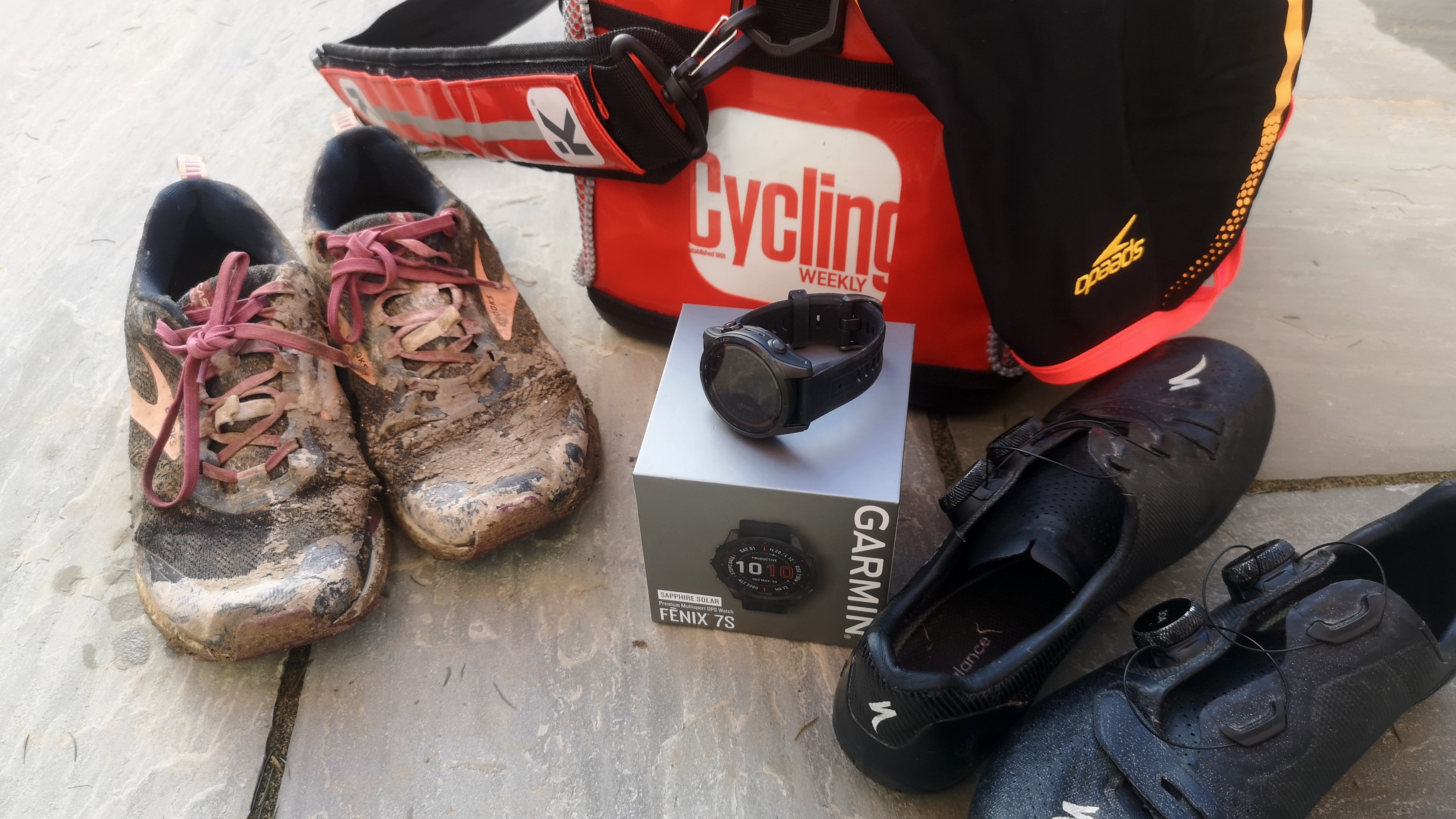
Highlights of the Fēnix 7 include genuinely impressive battery life, with weeks of charge-free use offering uninterrupted data. The heart rate accuracy proved to be extremely reliable, too, something rarely considered the case in a wrist-based device. Garmin appears to have made some substantial improvements to GPS tracking, too. This is a fully loaded smartwatch, and it's worth ensuring that you'll use at least most of the features before shelling out. Finally, if I could ask one thing from Garmin, I'd request a smaller, lighter package, as I still find sleeping in the Fēnix a struggle.
-
+
Heart rate accuracy
-
+
Impressive battery life
-
-
Some inaccuracy in swim data
-
-
Size is still large on a small wrist
You can trust Cycling Weekly.

The Fēnix 7, like the Fēnix 6, is a pretty sophisticated device, suited to athletes who dabble in sports outside of cycling, or, those who cycle only but also want to monitor their health and lifestyle choices via typical smartwatch features.
Available in the standard, S (small) and X (fully loaded) models, the Fēnix 7 retails from £599.99/$699 (Fēnix 7, no Sapphire, no Solar). The Fēnix 7 Sapphire Solar - the model which I have on test - costs £859.99/$899, with a standard strap. A Sapphire Solar with Titanium strap will set you back £1,149.99 and the 7X costs a bit more too; the Sapphire treatment is anti-scratch and offers greater durability.
The GPS watch can track road cycling, off-road riding, running, swimming, plus strength sessions, pilates or, yoga (and a lot more - if you take part in a sport not listed in Garmin's inventory, I applaud you). Navigation is provided as well as points of interest and suggested courses.
Health and lifestyle features include steps, sleep, pulse oxidation, stress, and for women, menstrual cycle tracking - or more relevant for myself at the moment - pregnancy tracking. My approach to training through pregnancy has been to return to my multisport roots: a bit less 'bike only' and a bit more swim, bike, run, lift - so it's been a pretty perfect time for me to test the Fēnix.
The watch has its own built-in 'Gen 4' heart rate monitor. Tested against a chest strap alongside a Garmin Edge 830 computer, I found only 1 bpm discrepancy in the max heart rate, with the average identical - which is impressive for a wrist-mounted option.
Bluetooth and ANT+ connections mean that power meters can be paired, too. An inbuilt LED torch is a new feature added to the Fēnix 7X. I do not have this feature on the 7S, but I don't feel I'm missing out either. I never head out into the wilderness without my phone, which also has a torch.
For the Fēnix 7, Garmin has added in touch screen capabilities. To be honest, I didn’t use this much. A quick test confirms It works, but I found the five buttons more user-friendly - perhaps out of familiarity.
Key features
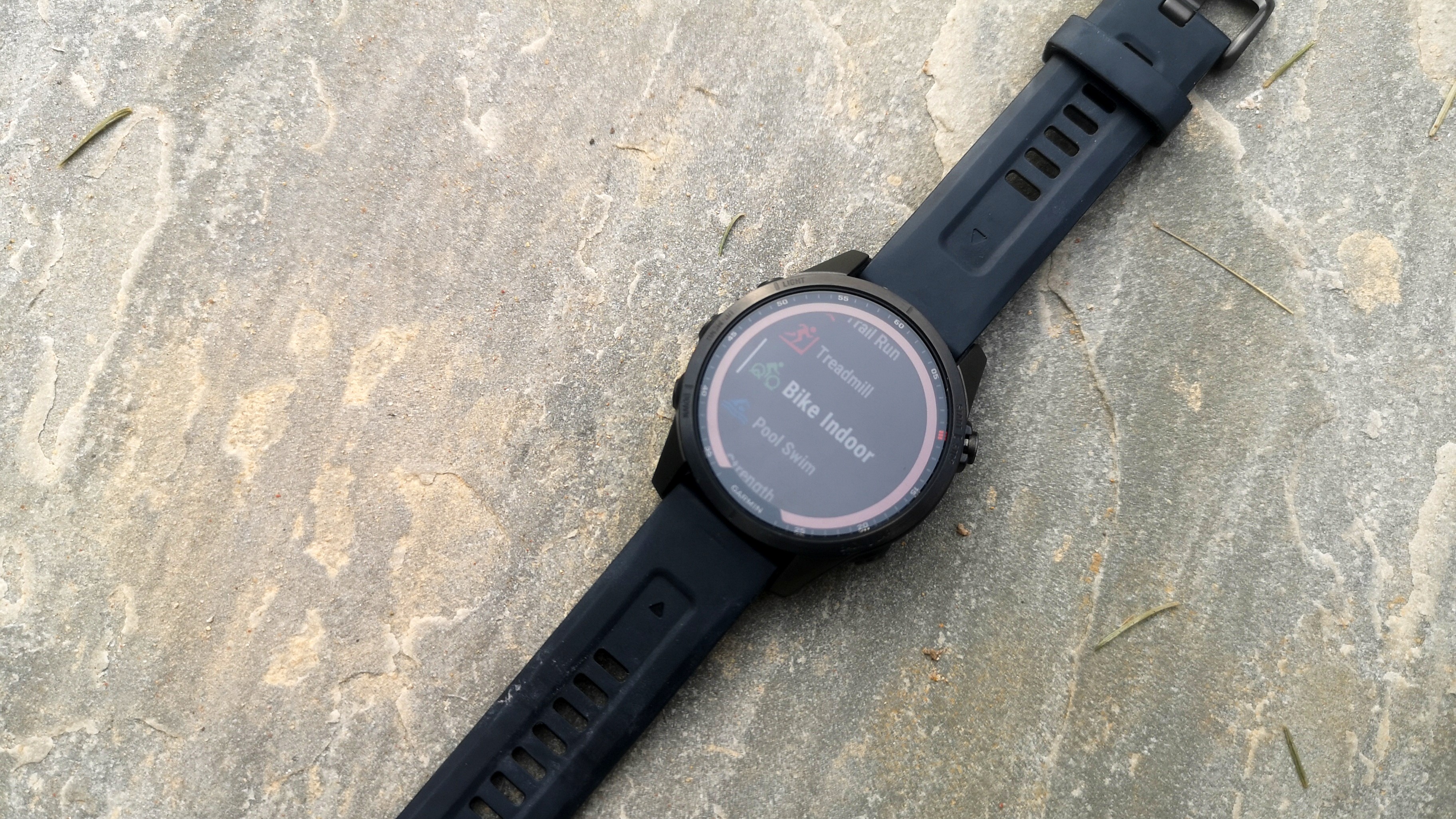
Fēnix 7: improved battery life
The Fēnix watches utilise solar power from the watch face to improve battery life, and the number one difference between the outgoing model, and this new one, is a 200% boost in the solar harvesting capacity.
The Fēnix 7 lasts up to a claimed five weeks in smartwatch mode and five days in GPS mode, vs 14 days and 36 hours for the old watch. I never got anywhere near five weeks - using the GPS data will put pay to that - but, using the GPS tracking most days, I always got more than a week.
Improved GPS on the Fēnix 7
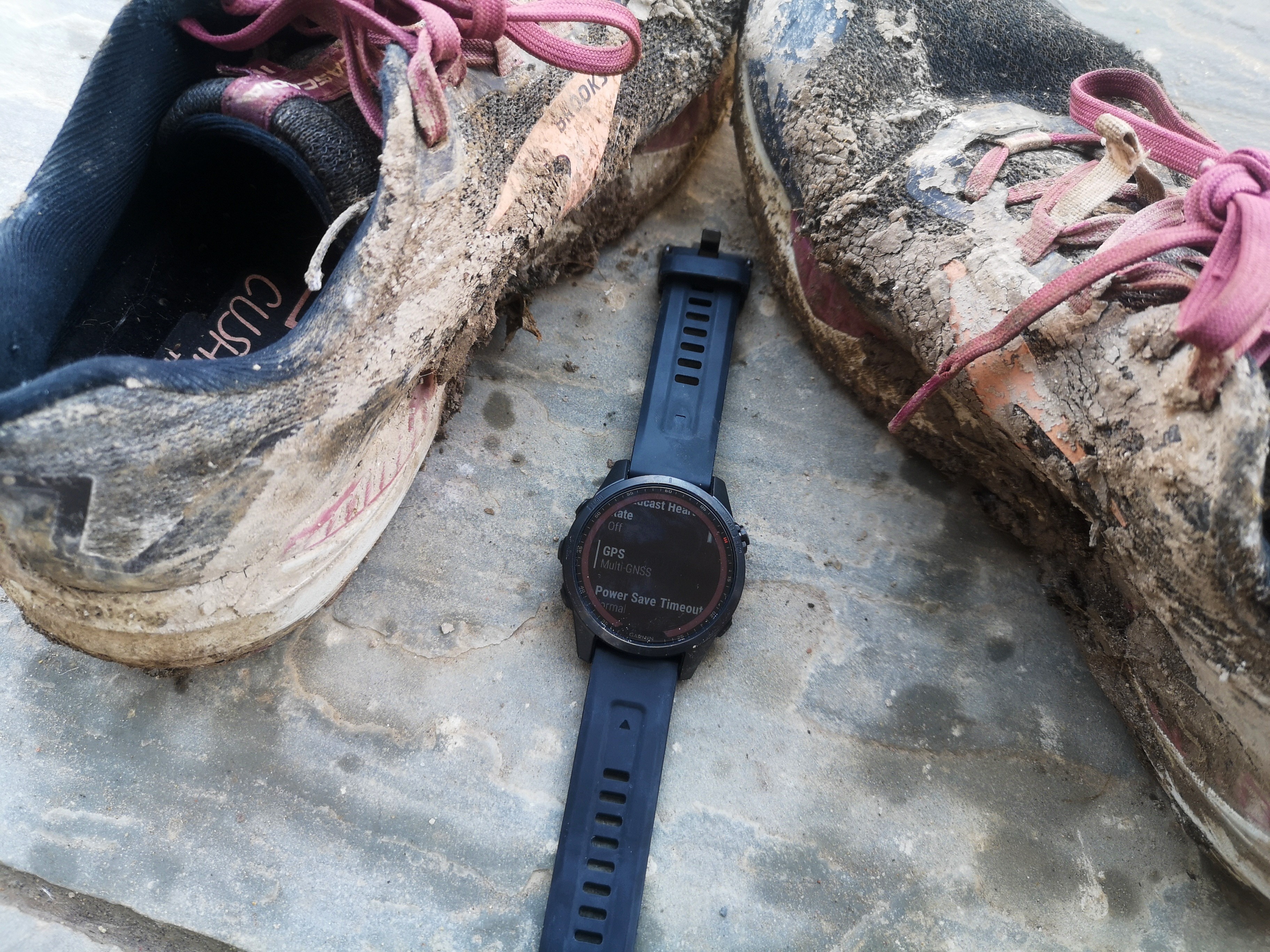
Inaccurate GPS data can be infuriating for athletes, and there were some complaints - particularly from runners - regarding the Fēnix 6. It's not something that has impacted me: my running tends to be an off-season activity and small discrepancies don't tend to register, but if I was training for a 5km PB, this would be a very different story.
Garmin says that the GPS accuracy on the Fēnix 7 Sapphire Solar has been improved, thanks to the introduction of multi-band GNSS support.
The Fēnix 7 Sapphire Solar Edition uses GPS, GLONASS and GALILEO satellite systems to record your location, like its other devices. However, what's new is the introduction of multi-band GPS tracking.
"In the past [additional bands] used to be available to the military only, and then when they were publicly available they were just too expensive to put into a consumer product. We've been able to enable this now; we've had it on previous handheld devices for outdoor handheld computers, and we've now been able to integrate it into the watch," explains Garmin's product expert, Vangellis Stamatiadis.
Most of us will recognise the problem, Stamataidis included. "For example you're running through Canary Wharf [in London], and suddenly your pace goes to 12 minutes a mile... or 5 minutes 40 seconds a mile...," in this instance, your own inbuilt GPS knows the watch is incorrect, and that can be annoying. "This is an industry issue, it's a GPS issue in general, you run through the middle of a city, and the GPS signals bounces off the glass, and by the time they get to the satellite it's [badly affected].
"This is where multi-band comes in, multi-band can correct that. When you're talking to a satellite, it's going to take two communication points, on the second communication point, the L5 band is essentially going to proof check the other band, and then correct the information.
"For those users who are looking for that finite detail, multi-band is incredibly accurate, I'm talking about going from one side of a double lane in Southampton, to the other side of the street - it knows exactly where I'm crossing to pinpoint accuracy."
To activate multi-band, go to 'Activities and Apps', select an activity (eg, trail running/mountain biking), select the activity settings, and in GPS choose 'Multi-GNSS Multi-Band'.
You can also improve GPS accuracy by activating 'every second' data frequency, in 'settings' and 'data recording', this will use more battery, but then the Fēnix 7 has ample capacity.
Testing the Garmin Fēnix 7 against a Garmin Edge 830, I consistently found that both data sets were extremely close. Unfortunately, living as I do 'out in the sticks', I don't often encounter issues with erratic pacing data - but I could see that the Fēnix 7 files would more closely demonstrate exactly where I had been, for example, being able to display which side of the road I'd been on and where exactly I'd crossed.
Navigational features of the Fēnix 7
Following a pre-loaded route, created in Garmin Connect, was surprisingly easy when running, despite the small screen. The colour map meant I could easily see which way to turn.
The mapping tool would be much more difficult to use when riding. You’ll get a vibration at the wrist when it’s time to make a turn, but in my opinion, a wrist-sized screen only really works on the bike if you already have an idea of the route, and simply want a back-up for occasional map checks.
There are some handy additional features, with points of interest available, as well as ability to select popular routes, or ‘sight and go’, where the Fēnix 7 will route you around an obstacle to your desired destination.
Swim tracking on the Fēnix 7
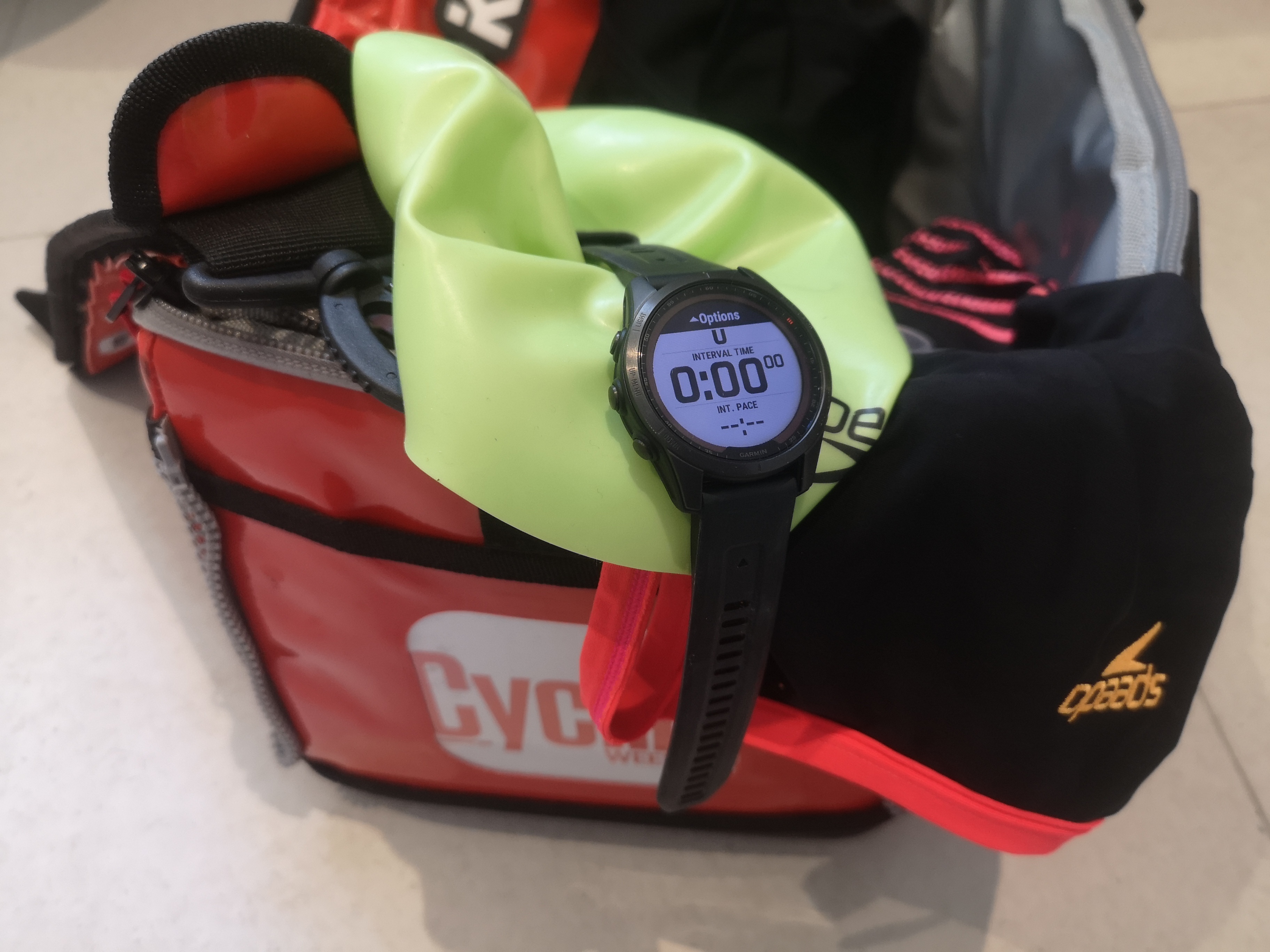
Whilst cycling is usually my primary sport, having hung up my racing shoes (for at least a year), I’ve been dabbling in a minor return to my multisport past. Swimming has played a major role, and that’s something plenty of other cyclists do, especially over winter.
The Fēnix 7 is waterproof to 10ATM, which means you can submerge it to 100 metres below water, even if that involves seawater. So, no worries about sessions at my local pool.
You can create sessions and send them to your watch, or choose from ‘suggested sessions’.
I did find that the Fēnix 7 struggled with accuracy of distance, it wasn’t uncommon for a 2800m swim to be recorded as 3000m, for example.
There are several factors that can affect this: using drills which affect swim stroke (I am partial to a little one arm ‘fly, because full butterfly is antisocial during public swim sessions), turning in the lane (eg when stuck behind someone who does not understand the significance of a toe tickle), or switching stroke mid length (usally for the same reason).
Whilst an extra 200m on a 2.8km swim isn’t make or break for me, it might annoy me if I was more focused on training and progression. These issues would be less likely to occur if you were sticking to one stroke (front crawl) only.
Garmin Fēnix 7 coaching features
Where to begin? It would be impossible for me to list every feature here without writing more words than any online audience will ever read.
Like most Garmin Edge computers, the Fēnix 7 will provide you with training status’, your V02 max, suggested recovery after a workout - and a lot more.
A new feature is ‘Real Time Stamina’, which can help prevent athletes from pushing too hard and suffering a burn-out mid activity, you’ll also get suggested workouts (unless you’ve paused your ‘training status’).
Mountain bikers can enjoy ‘grit and flow’ measures, to track their performance on the trails, whilst runners gain run cadence, average stride length data, and swimmers can see their average strokes per length. These are all useful measures if you're dedicated enough to keep an eye on them and address them should tweaks be needed.
Garmin Fēnix 7 lifestyle features

Like most smart watches, the Fēnix 7 will record your sleep, resting heart rate, steps, and more. And, similar to the coaching features, it does a lot more: too much to list here.
One bugbear I have with the watch is its size, weight (58g for the Fēnix 7S Solar Sapphire) and material. Despite testing the ‘Small’, this watch still takes up a lot of space on my wrist, and I find it gets sweaty and uncomfortable. Therefore, with the best will in the world, I find myself occasionally removing it at night - which creates gaps in ‘body battery’ (overall recovery vs exertion), sleep data and resting heart rate. Addressing this would be the drastically increase the amount of value I got from the watch, as for it to be effective, you really need to wear it all the time.
The 'sleep score' and sleep analysis is helpful, for example, offering simple statements that are easy to put into practice, such as "your sleep was shorter than average but productive and you're ready for training today."
Heart rate variability tracking is available, this is a feature I've only just unlocked in the settings menu, so more testing will follow.
I don’t use Pulse Ox. Medical practitioners often use Pulse Oxomiters in critical care settings like emergency rooms or hospitals, to measure small changes in blood oxygen. A level lower than 92% would be concerning. For healthy individuals, the variation is minimal and I fail to believe this is a tool most amatuer athletes need or use; Garmin says this can be useful for altitude acclimatisation - this does make a lot of sense, but, it's not something that I see most of us using reguarly.
Sleep recording always seems pretty accurate, and as noted, the heart rate readings are impressive compared to a heart rate strap. I can see 7-days data on the watch, or log into Garmin Connect for more.
Value and conclusions
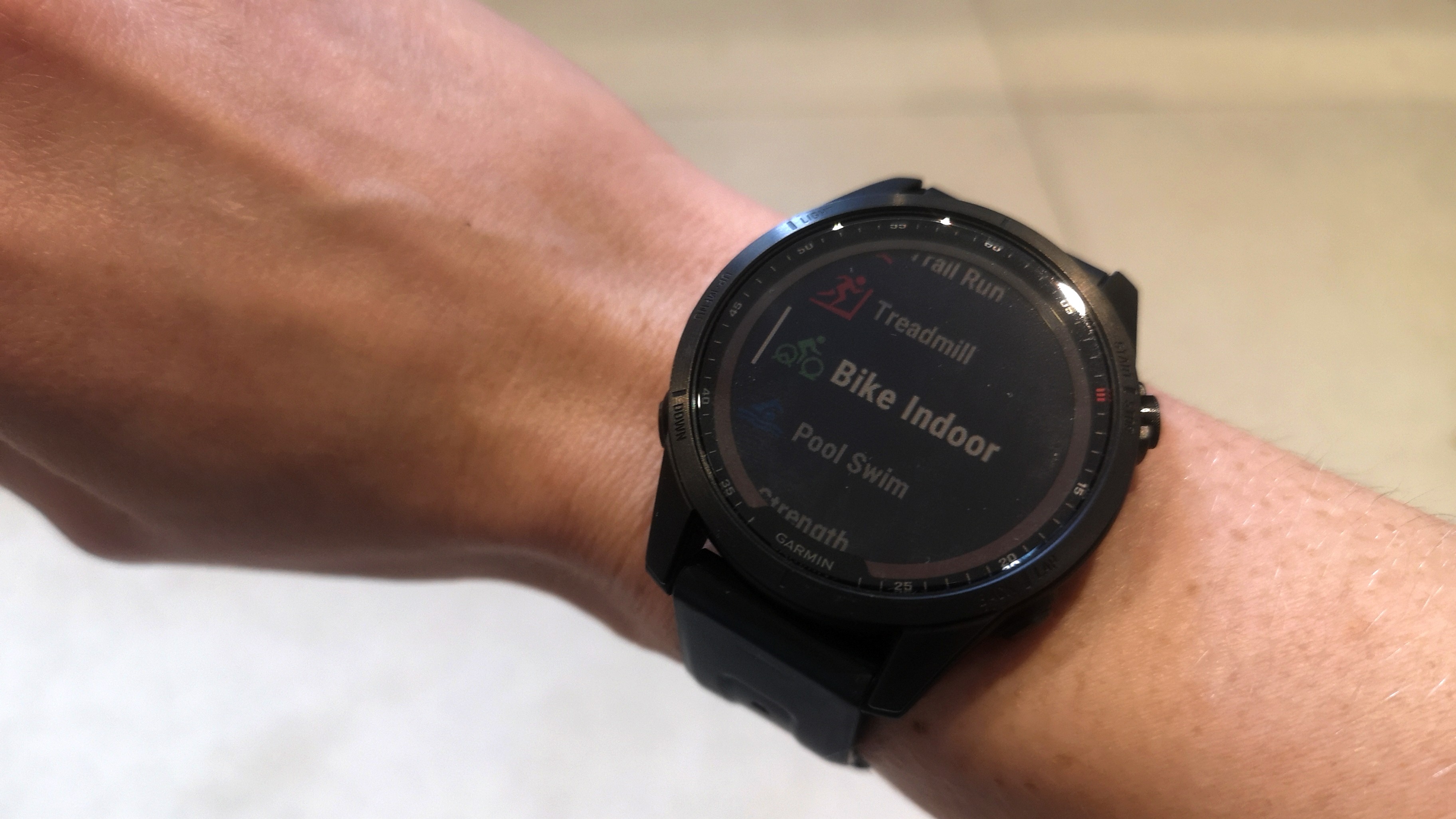
I have been using the Fēnix 7 for six months, having previously worn the Fēnix 6 for over six months. The improved battery life is seriously impressive: I'm always surprised when the watch chimes in to tell me it's time to charge.
The heart rate accuracy really surprised me, too, I expected a greater discrepancy between a watch and a chest strap, but the two were almost identical (bar 1bpm).
The pool data was mildly disappointing, however, I would put it down to the idiosyncrasies of sharing a lane at a public pool. The GPS tracking is seriously impressive, though I'll admit that I'm rarely running between high rise buildings - which is where most people encounter issues.
Garmin has loaded the watch with a myriad of navigational and fitness tracking metrics, though these can be overwhelming and it’s worth checking you’ll actually use them before shelling out the £599.99+ RRP. For me, the single change that I'd like to see from Garmin would be a smaller, lighter package: I'd get a lot more from the watch's features if I didn't feel inclined to remove it in my sleep.

Thank you for reading 20 articles this month* Join now for unlimited access
Enjoy your first month for just £1 / $1 / €1
*Read 5 free articles per month without a subscription

Join now for unlimited access
Try first month for just £1 / $1 / €1
Get The Leadout Newsletter
The latest race content, interviews, features, reviews and expert buying guides, direct to your inbox!
Michelle Arthurs-Brennan the Editor of Cycling Weekly website. An NCTJ qualified traditional journalist by trade, Michelle began her career working for local newspapers. She's worked within the cycling industry since 2012, and joined the Cycling Weekly team in 2017, having previously been Editor at Total Women's Cycling. Prior to welcoming her first daughter in 2022, Michelle raced on the road, track, and in time trials, and still rides as much as she can - albeit a fair proportion indoors, for now.
Michelle is on maternity leave from April 2025 until spring 2026.
-
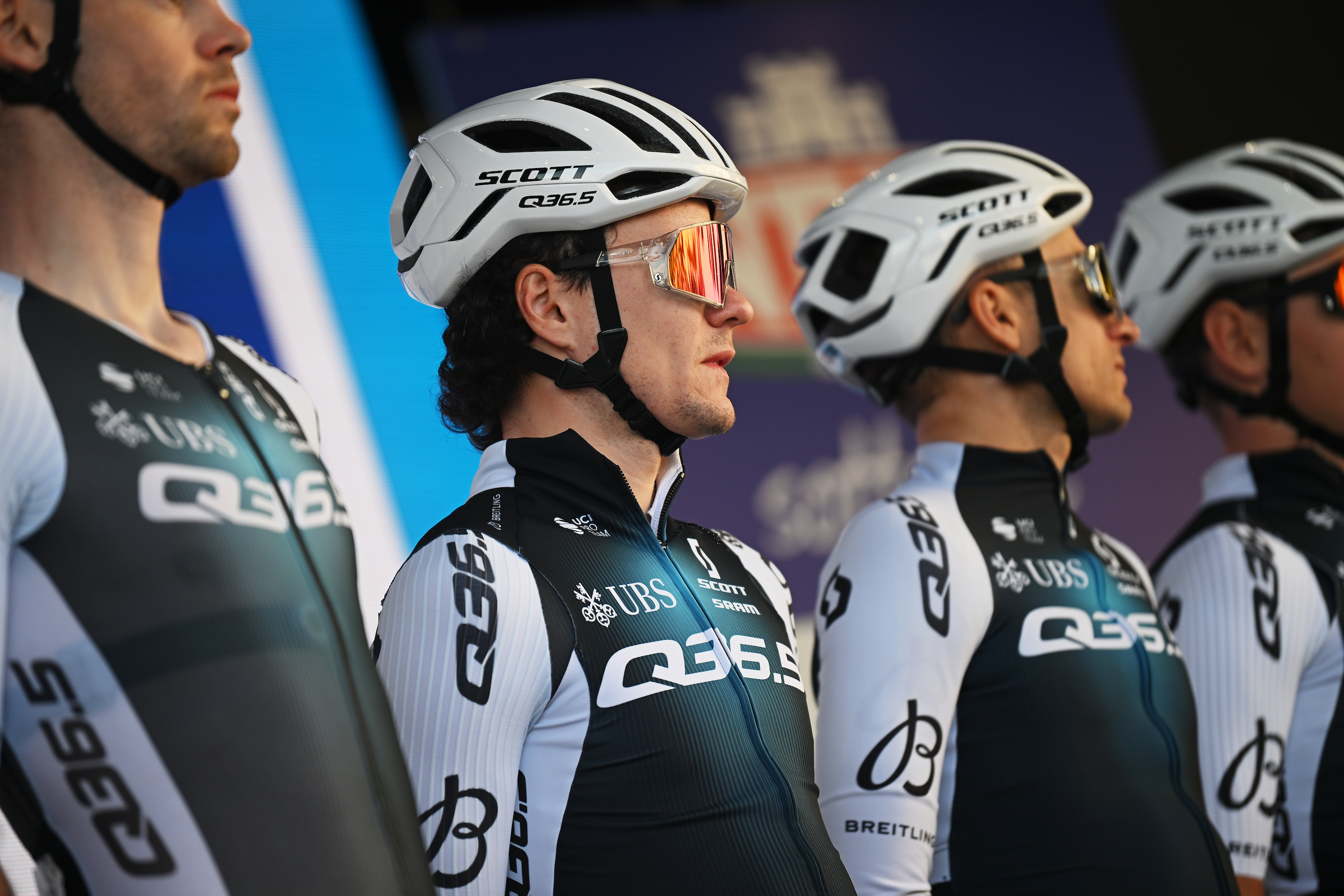 'I thought it would be dark by the time I got here' - Joey Pidcock, the last rider to finish Paris-Roubaix, on his brutal day out
'I thought it would be dark by the time I got here' - Joey Pidcock, the last rider to finish Paris-Roubaix, on his brutal day outQ36.5 rider finishes outside time limit, but still completes race with lap of the Roubaix Velodrome
By Adam Becket Published
-
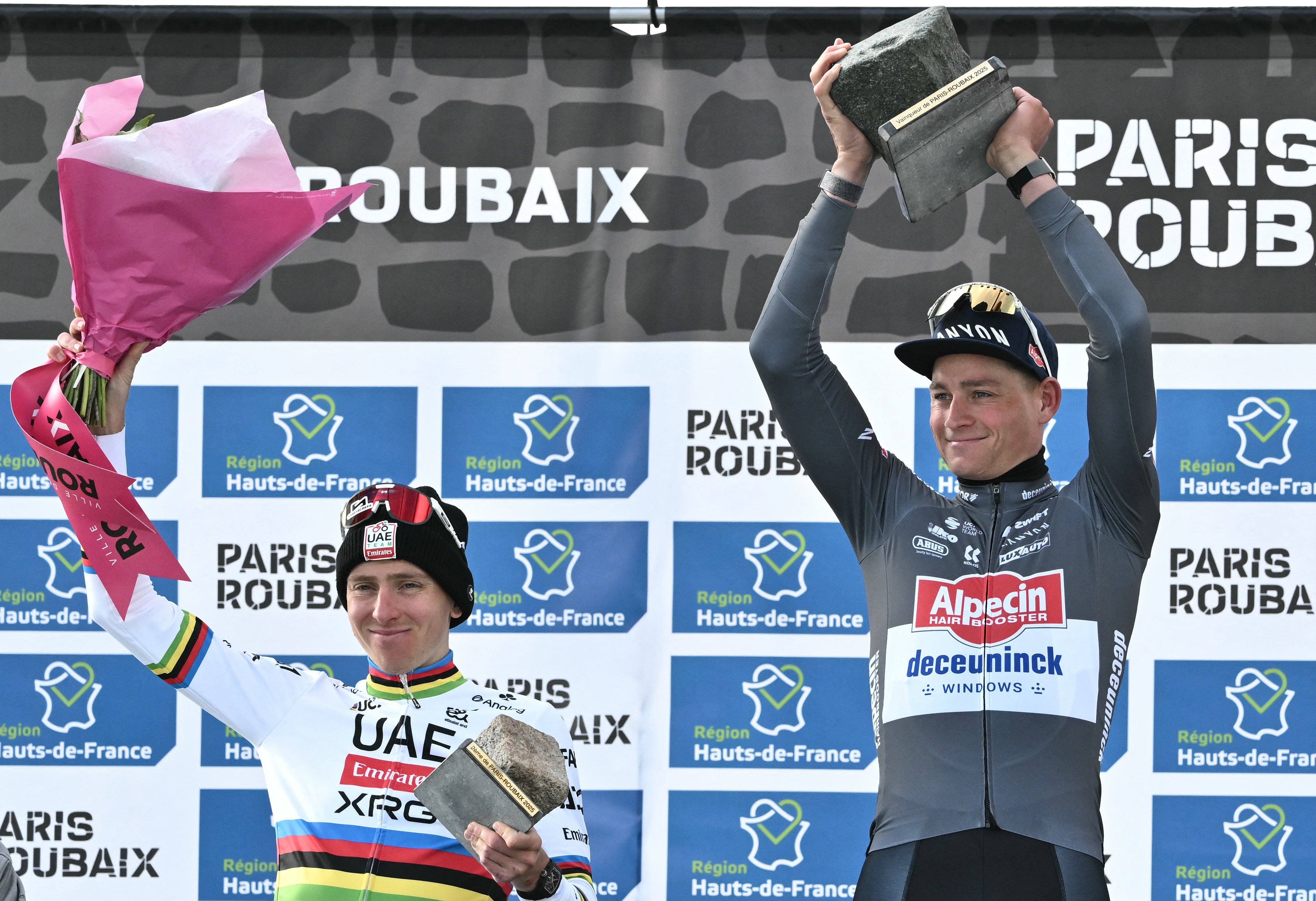 The stats behind Mathieu van der Poel’s record-breaking Roubaix success
The stats behind Mathieu van der Poel’s record-breaking Roubaix successThe Dutchman's eighth success in a Monument underlined his standing among the Classics greats
By Peter Cossins Published
-
 'It was like a stone hitting my face' - Mathieu van der Poel calls for 'legal action' after bottle incident at Paris-Roubaix
'It was like a stone hitting my face' - Mathieu van der Poel calls for 'legal action' after bottle incident at Paris-RoubaixThe winner was hit by a bottle in the face on Templeuve, sector 8b
By Adam Becket Published